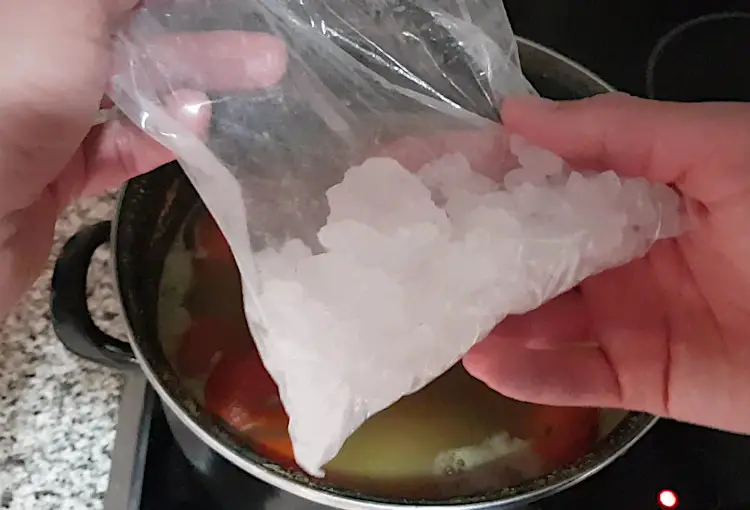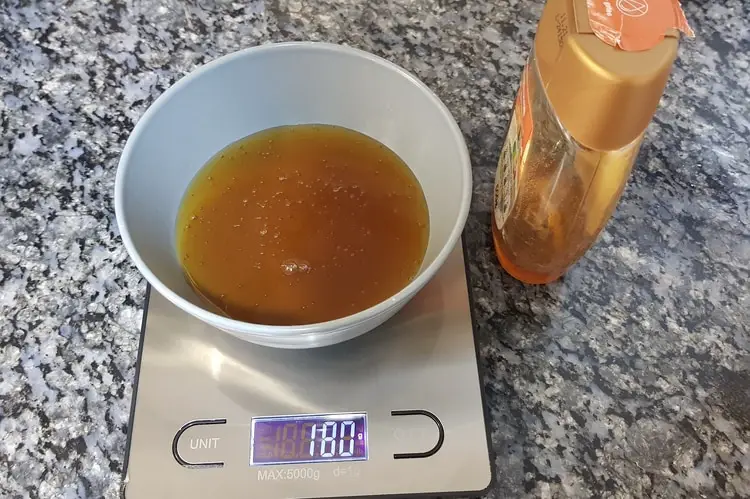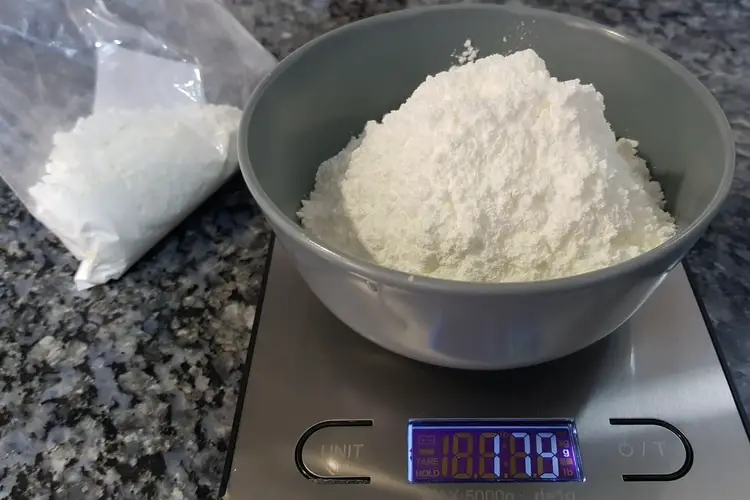Sugar is a vital and dynamic brewing ingredient.
There are many types of sugar and some specialty beers may only be perfected with the addition of sugar. Know it, be judicious, and learn to use sugar to great effect.
As a rule of thumb, keep the total sugar ratio to no more than 5 – 10% of the total weight, raw or extracted barley malt.
1. Corn sugar – Dextrose
No products found.
Pros
Corn sugar is a versatile and cheap brewing ingredient. It is the most consistent and neutral sugar for priming beer. Keep it dried and sealed and it will rarely let you down and fail to do its job.
It is good in Cream Ale and strong ales of any sort. When a beer goes over 1.080 OG for example, it is a waste of malt to use more. You could, but sugar will do.
Cons
Be warned beginning brewers – some beer kits will suggest mixing 3 lbs. of dextrose with 1 can of hopped brewer’s malt to make 5 gallons of beer!!!
Don’t do it. Dextrose should be used in the 8 – 10% range of total brewing weight. So, about ½ pound of sugar to 6 pounds of malt extract.
If overused, it will leave a thin mouthfeel and distinct apple cider taste. It tastes exactly like bad homebrew and going back to the dawn of homebrewing that any of us remember hearing of our dad’s or grandad’s homebrew. It’s what gave homebrew a bad rap.
2. Table sugar – Sucrose
Pros
In a pinch you may prime with it. If you could get it in crystallized form, not granulated, this would be slightly better. It is mostly made from cane sugar though can be mixed with fructose derived from corn.
Cons
I do not recommend brewing with it. It is more refined than corn sugar and more susceptible to moisture. It has been known to add a distinctive cidery flavor even in modest amounts 10 – 15% of total weight.
3. Brown Sugar
Pros
I’m OK with brown sugar even though it is basically sucrose with molasses added in. 5 – 10% added to Bitters, Best Bitters, English Browns, or Scottish styles add nice character.
The molasses flavor is subtle, modest and may only exist in the mind of the dreamer, but British brewers do brew with burnt sugar. So, it gives an approximation of style.
Cons
If used in excess, it will give the same flavor as sucrose. Be wary.
4. Candi Sugar

Pros
This is the WORD. This is quite expensive and in my view worth every dollar. It is basically rock candy made from sugar beets, available in white, amber, and dark.
No Belgian brewer would be caught dead brewing with any other.
In fact, some of the red and even brown Belgian ales’ color are not due to flavoring malts, but a dark candi sugar blended with some kettle browning, the Maillard Reaction. There can be minute steeping of a handful of dark malts amounting to less than 1% of the total grist.
Cons
It’s expensive.
5. Honey

Pros
Honey is lovely, natural, and will add natural minerals and amino acids to the beer. There are many types of honey, distinctive by color, flavor, and season.
I will recommend one if you can find it. In the fall, in the North Carolina Mountains, the bees harvest the last blooms before winter. There are blooms on the basswood tree which produce a light honey, almost lemon yellow, with a distinct minty essence. This could be very nice in a blonde ale or even a wheat beer.
Cons
It does have a strong flavor. Anything over 5% of total weight could define (overwhelm) the flavor.
6. Maple Syrup
Pros
Real maple syrup is pure and will also add a distinct taste to your beer. If natural and from a good source, it is a fine ingredient. There is a brewer in the Chicago area who uses Candy Cap Mushrooms in his Porter, used as a culinary flavoring, candy caps make the beer taste like maple syrup!
Cons
It will define the flavor of your beer even more so than honey. Be sparing and cautious.
7. Fructose
Pros
This is fruit sugar. Most fructose is used via fruit itself, though it is available in liquid and powdered form. It is 1.2 -1.8 times sweeter than sucrose! Hard to believe. As it is sweeter, less is needed to get higher OGs.
Its sweetness lingers for a shorter time, and is more profile neutral, so if one were to add a lot of one sugar, fructose would be a good choice.
Cons
It can be 5 to 10 times more expensive than pure cane sugar.
However, use fruit! There is always something in the out-of-date section of the grocery store. Experiment and learn what flavors each fruit brings to profile.
8. Molasses
Pros
Hmmm, well in the countryside I come from, that is North Carolina, the Southern part of the US, molasses is a traditional savory sweetener, used to pack smoked hams and known to be eaten on biscuits. That is breakfast bread, not cookies, for any of our non-North American readers out there.
It is brown to black in color and is the burnt part of the sugar left in the pot after rendering the sucrose or dextrose from the cane and corn.
Cons
It is not that sweet. It will blow-up the flavor so extreme caution is recommended, 1 – 2 % total weight is recommended. This is a good candidate for a 1-3 gallon experimental batch.
9. Milk sugar – Lactose

Pros
Lactose is a non-fermentable sugar and can be added for body, flavor, and mouthfeel. When I say body, I do mean big: cheesy, creamy, buttery, milky. Examples are Milk Stouts and Milkshake IPAs.
In addition to brewing it’s used in baking mixes, instant soups and potatoes and coffee.
Cons
Lactose-intolerant folks should be cautious, but my reading indicates that it is in small enough amounts to have minimal ill effects. As it does not ferment, it is an aesthetic and sensory addition only and yields a high FG to any brew.
10. Invert Sugar
Pros
This is an unusual ingredient and perhaps a good experimental ingredient for folks. It is a high-quality liquid sugar processed from sucrose and water.
Through its production process the chemical bond between the cane’s glucose and the fructose is broken. How does this affect the brewer? It really doesn’t.
I do remember reading from the Bible (Papazian), many years back, invert is a good choice of sugars as it has a neutral character, not too cidery.
Cons
It is expensive.
Interesting note. It is called invert sugar because of its light reflective properties. For example, when sunlight passes through it, it reflects back in the opposite, or inverted, direction. Hence, the moniker, invert sugar. Who woulda thunk it?
Last spoonful
It could fill spoon full of diamond,
Could fill spoon full of gold,
Just a little spoon of your precious love,
Satisfy my soul.
–Spoonful, Howlin’ Wolf
Screw the Reinheitsgebot and its 4 ingredients law (water, barley, hops and yeast). Brew with all the sugar you want.
It is a vital, lovely, and fun ingredient to use.
Utilize for Ultra-malty beers, Tripels, Doppel-Quadruple Bocks, Imperials, and simple Bière Forte. These styles already have so much malt that more would be a waste.
Sugar adds the needed potential alcohol as the malt has reached a flavor threshold that compliments and welcomes these sweet additions. Capable of nuance, uniqueness, and octane, it makes a strong beer all that much better.
Last update on 2024-10-03 / Affiliate links / Images from Amazon Product Advertising API
